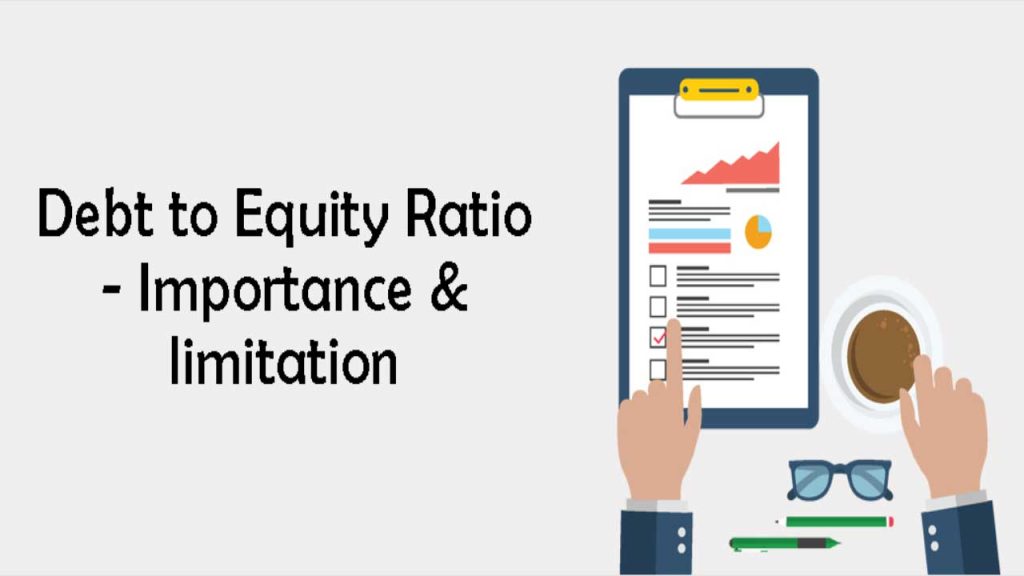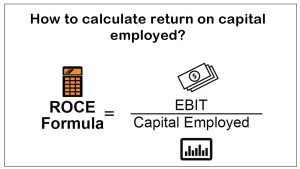Importance & limitation of Debt to Equity Ratio – The d/e ratio is calculated by dividing the firm’s total liabilities by the shareholders’ equity. This measure is expressed in percentages that represents the firm’s liquidity i.e. how much of the firm’s debt is being used to fund in comparison to equity.
Investors, particularly prospective equity owners, often utilize this ratio to evaluate a firm’s finance plan because they are concerned about the return that will be delivered to them after creditors, banks, and treasury shareholders have been paying.
Formula for D/E ratio is-
Debt to Equity Ratio = Total liabilities/Total equity
A high debt to equity ratio is normally a red flag, meaning that if the business becomes insolvent, there will be little equity to fund the debts. Because the debt is smaller than the accessible equity a low debt/equity ratio means lower risk.
A d/e ratio is an essential component of ratio analysis. It is one of the gearing ratios, including the time interest earned ratio, the debt ratio, and the equity ratio.
Gearing ratios are a statistic used to explain how a firm’s activities are funded, i.e. either by debt or shareholder capital.
An ideal d/e ratio is about 1:1, that implies that equity should balance liabilities; nevertheless, the optimum ratio is much more dependent on the form of business or might differ from one to another.

Importance of Debt to Equity Ratio
The debt-to-equity ratio is especially important for a firm’s financial evaluation. The following is a list of points that illustrate the importance of debt to equity ratio.
- The debt-to-equity ratio is a useful instrument in financial evaluation that allows prospective investors to assess a business’s stability. A high debt-to-equity ratio indicates a lack of liquidity. It denotes that the company is struggling to fund its liabilities with cash and reserves and is thus reliant on creditors. The likelihood of the company declaring bankruptcy is strong.
- The d/e ratio is also useful in determining shareholder earnings. A large amount of debt means that the corporation must pay a large amount of interest, which greatly decreases earnings. A drop in earnings means a drop in dividends paid to common shareholders.
- When a small company files for a loan, lenders and creditors both look at the d/e ratio. It denotes the firm’s creditworthiness and how consistent they are with installment payments.
- It is beneficial for leadership to show industry rivalry. The debt to equity ratio will assist the company in understanding its success in comparison to rivals. This can assist management in implementing better decisions in order to achieve the optimal debt/equity ratio.
Limitation of Debt to Equity Ratio
- The d/e ratio can also mislead prospective buyers, because a poor debt to equity ratio could indicate that the business is not properly funding its assets with the debt acquired. This indicates technological inefficiency, that would lead to lower returns even though the d/e ratio was low.
- The ideal debt/equity ratio of 1:1 cannot be universally applied to all sectors. A capital-intensive company could have a high debt/equity ratio, meaning that net investments have indeed been consistently maintained and funded by loans acquired, which would boost potential returns due to increased demand. That being said, since a low-capital sector would not need to spend on plants and equipment, the optimum ratio should be about 1:1. Another of the main drawbacks of the debt/equity ratio is that it can only measure the financial success of related firms.
- To grasp the debt-to-equity ratio, some background is needed. An individual who is unfamiliar with accounting terminology will be unable to deduce the terminologies listed in the balance sheet. To grasp the definition and purpose of the d/e ratio, you must first grasp the words equity and liabilities.




